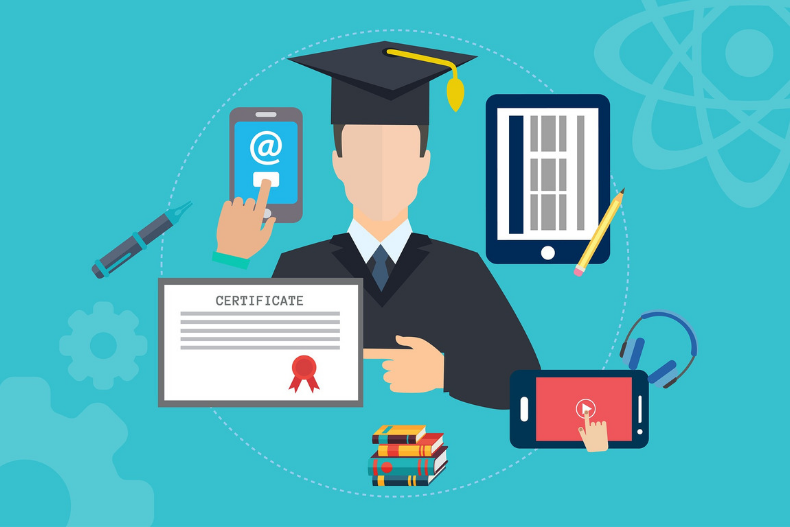In today’s technology-driven society, digital literacy is a crucial skill for students to succeed in both academic and professional settings. It extends beyond simply knowing how to use a computer—it involves critical thinking, online safety, digital communication, and ethical internet use.
As classrooms and workplaces become increasingly digital, students must be equipped with the knowledge and skills to navigate online environments responsibly and effectively.
In this article, we explore what digital literacy is, why it matters, and how educators can prepare students for a digital future.
What is Digital Literacy?

- Digital literacy refers to the ability to find, evaluate, create, and communicate information using digital technologies.
- It includes skills in internet navigation, digital citizenship, cybersecurity awareness, and media literacy.
- Digital literacy is essential for education, career readiness, and everyday life in the 21st century.
Why Digital Literacy Matters for Students
- Enhances Learning Opportunities – Access to online courses, e-books, and educational resources.
- Prepares for the Workforce – Many jobs require proficiency in digital tools like Microsoft Office, Google Workspace, and coding platforms.
- Encourages Critical Thinking – Helps students distinguish between credible and false information.
- Promotes Online Safety – Protects students from cyber threats, digital scams, and online harassment.
- Improves Digital Communication – Teaches students to use email, social media, and collaboration tools effectively and professionally.
Key Components of Digital Literacy
1. Internet Navigation & Research Skills
- How to search efficiently using Google, databases, and academic sources.
- Understanding credible vs. unreliable sources (fact-checking and recognizing misinformation).
- Proper use of citations and avoiding plagiarism.
2. Digital Citizenship & Online Etiquette
- Practicing ethical behavior in online spaces.
- Respecting intellectual property rights and digital privacy.
- Avoiding cyberbullying and engaging in positive digital interactions.
3. Cybersecurity Awareness
- Understanding strong passwords, phishing scams, and online threats.
- Knowing how to protect personal data and digital footprints.
- Recognizing secure vs. unsecure websites and links.
4. Digital Communication & Collaboration
- Using email, chat, and video conferencing platforms professionally.
- Working collaboratively using cloud-based tools (Google Docs, Microsoft Teams).
- Understanding tone, formality, and etiquette in digital communication.
5. Media Literacy & Critical Thinking
- Recognizing fake news, propaganda, and biased content.
- Understanding how social media influences opinions and behavior.
- Evaluating sources and verifying facts before sharing information.
How Educators Can Teach Digital Literacy
1. Incorporate Digital Literacy into the Curriculum
📚 Teach research skills through assignments requiring credible sources.
🔍 Use fact-checking exercises to spot misinformation.
📝 Encourage responsible online writing in blogs, forums, and discussion boards.
2. Teach Online Safety & Cyber Hygiene
🔒 Conduct workshops on cybersecurity (password protection, phishing awareness).
👩💻 Discuss privacy settings on social media platforms.
🚦 Promote awareness of online scams and digital footprints.
3. Use Interactive and Real-World Learning Activities
🛠 Gamify learning with cybersecurity challenges and online research competitions.
📊 Use digital collaboration tools (Google Drive, Padlet, Canva) for group projects.
🤝 Encourage digital discussions through online forums or virtual debates.
4. Foster a Growth Mindset Toward Technology
📖 Encourage students to explore coding, AI, and emerging tech.
🛠 Promote hands-on learning with digital tools (video editing, content creation).
🎓 Teach that technology is a tool for learning, not just entertainment.
Challenges in Teaching Digital Literacy
- Access & Equity Issues – Not all students have reliable internet or devices.
- Rapidly Changing Technology – Keeping up with new digital tools and security threats.
- Misinformation & Online Manipulation – Many students struggle to distinguish truth from fake news.
✅ Solutions:
- Schools should provide digital resources (loaner devices, public internet access).
- Offer teacher training to stay updated on digital trends.
- Teach critical thinking and fact-checking techniques regularly.
The Future of Digital Literacy
🚀 AI-Powered Learning – AI tools will help personalize digital learning experiences.
🌍 More Global Collaboration – Virtual exchange programs connecting students worldwide.
🕶 Virtual & Augmented Reality – Immersive learning experiences using VR/AR.
🔒 Advanced Cybersecurity Education – Stronger focus on digital ethics and online safety.
Conclusion: Empowering Students for the Digital Age
Digital literacy is no longer optional—it is essential for success in education, careers, and personal life. By teaching students how to navigate the digital world responsibly knowledge, educators can prepare them for a future where technology and knowledge go hand in hand.
🌟 How do you integrate digital literacy in your classroom? Share your thoughts below! 💻📚


